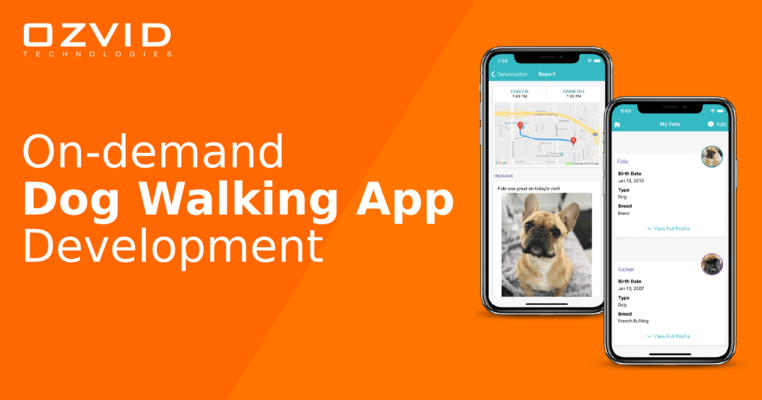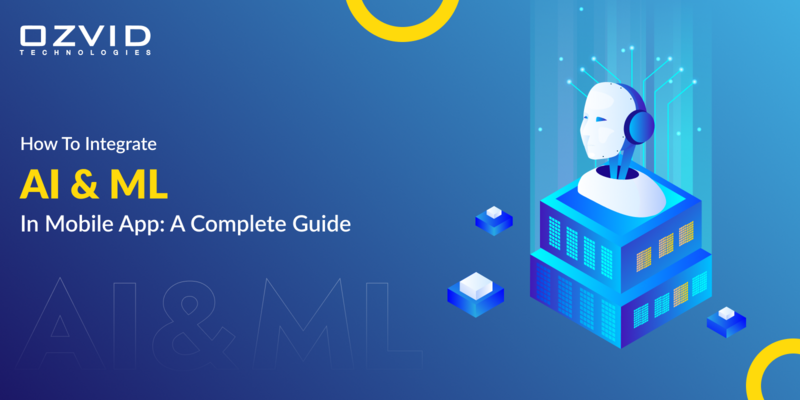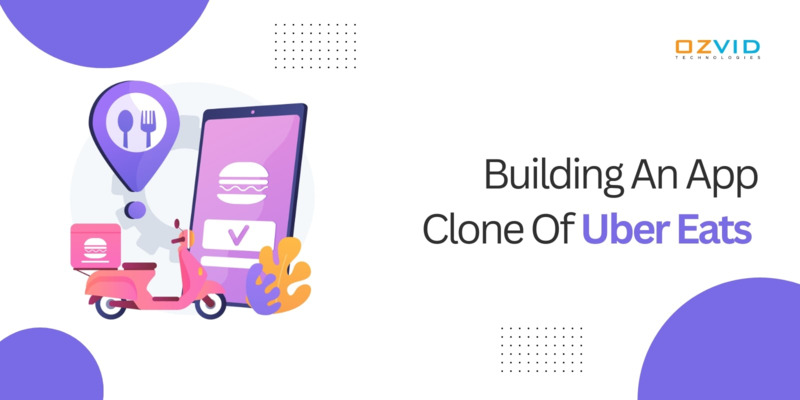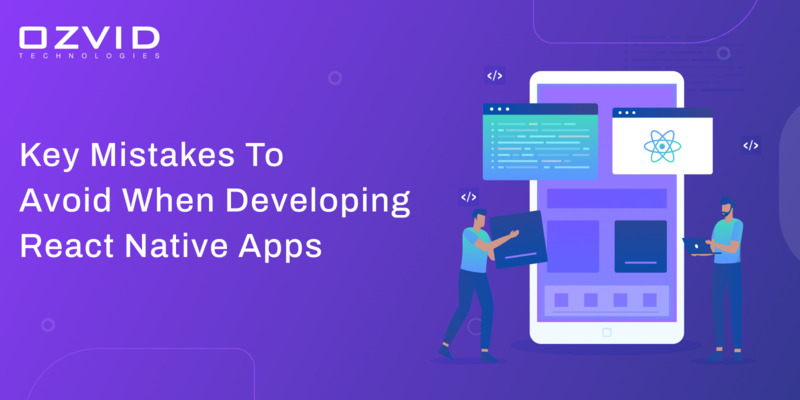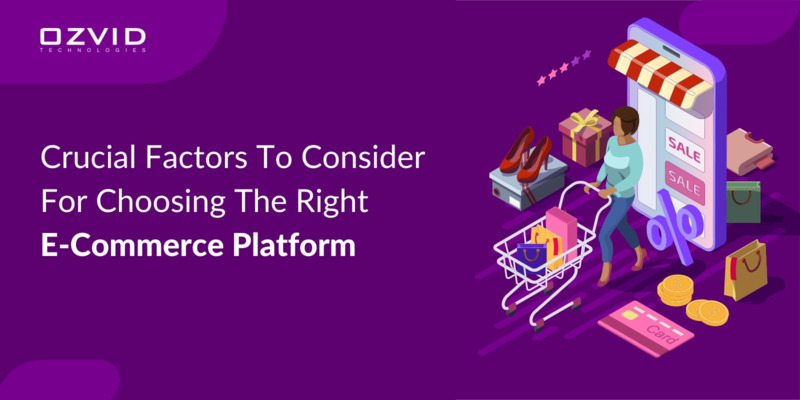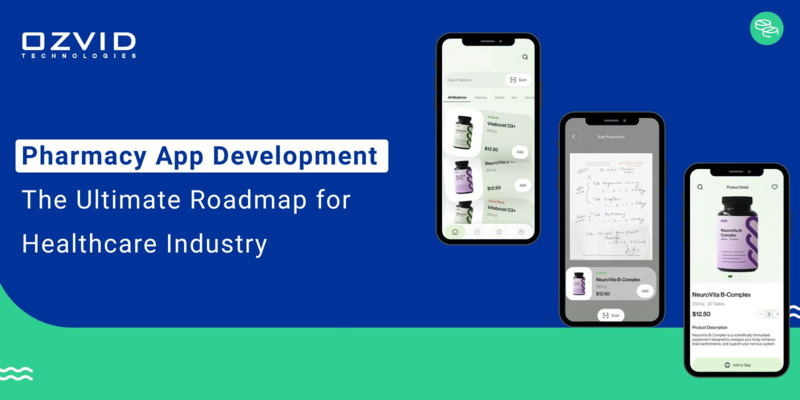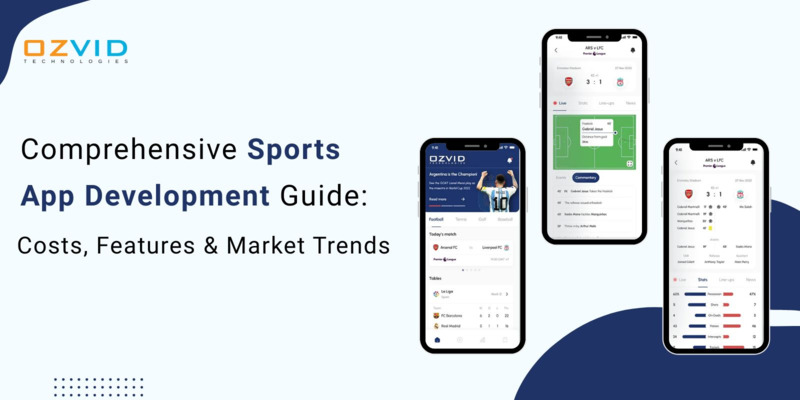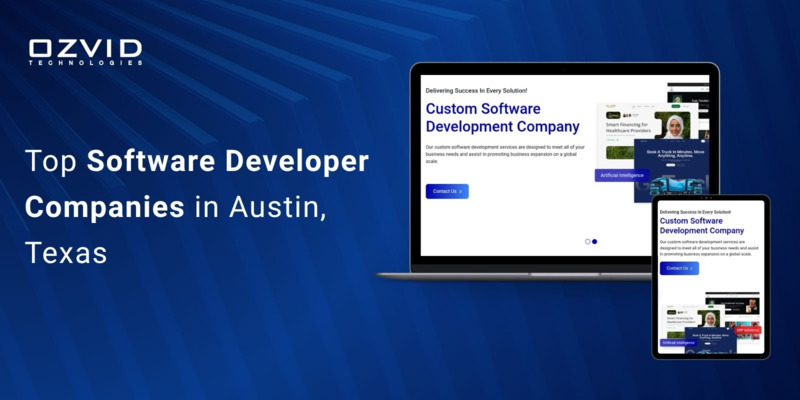- Nov 10, 2025
Share this post on:
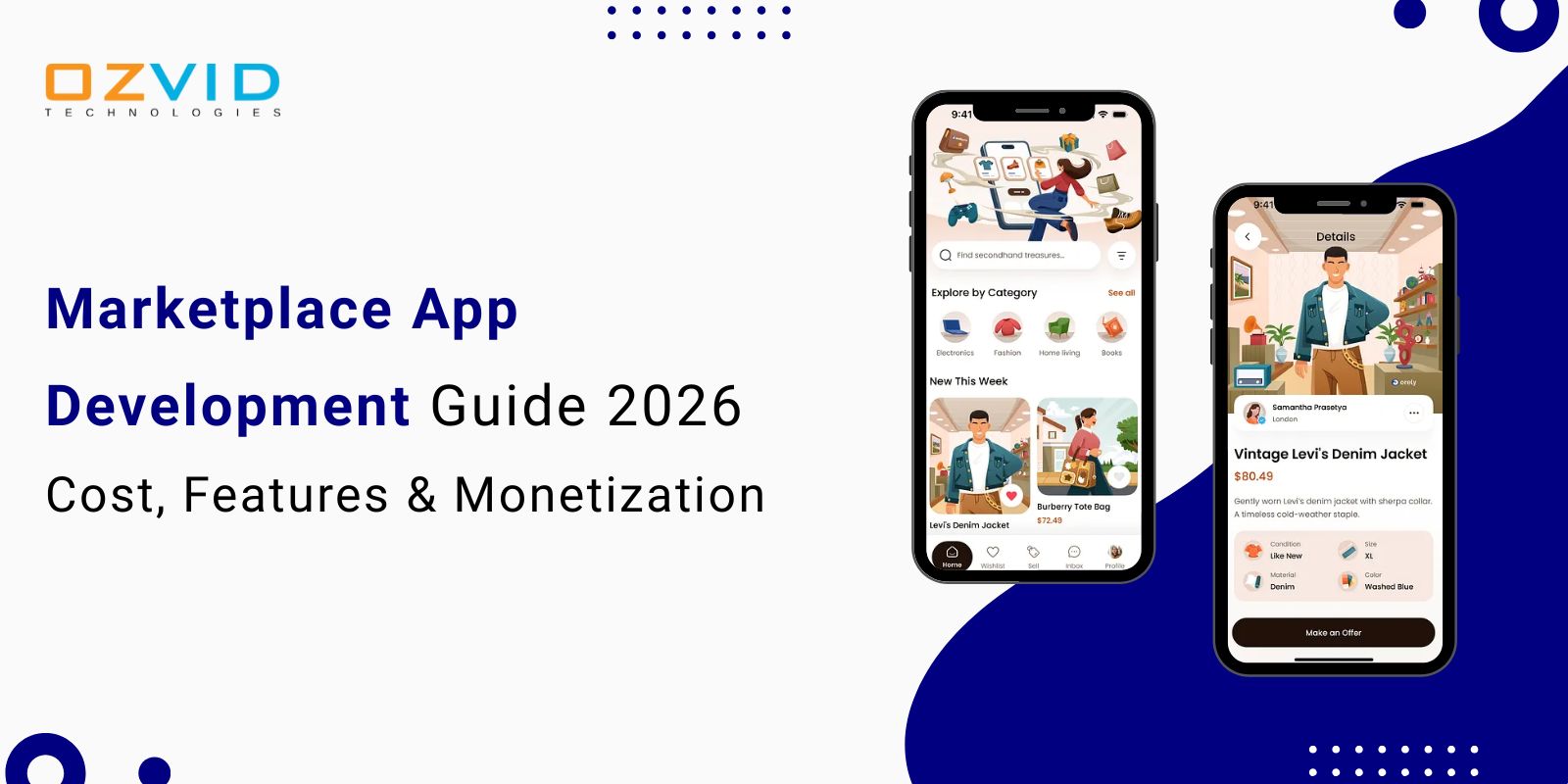
In today’s digital-first economy, marketplace apps have become the driving force behind modern commerce. From global giants like Amazon and eBay to niche platforms connecting local artisans or freelancers, marketplace apps have transformed how buyers and sellers interact online. These platforms act as digital intermediaries, simplifying the buying process for consumers while empowering sellers to reach wider audiences without heavy infrastructure costs.
The growing adoption of online marketplaces across industries - from retail and real estate to services and B2B trade - has created massive opportunities for entrepreneurs and enterprises alike. Businesses now see marketplace app development as a strategic investment to scale operations, increase revenue, and deliver exceptional customer experiences.
As we move into 2026, the demand for intelligent, user-friendly, and scalable marketplace software solutions continues to surge. This guide explores every critical aspect of marketplace app development - including what a marketplace app is, its key features, the development process, the cost to develop a marketplace app, and the most effective monetization models to ensure long-term success.
Key Takeaways
- Marketplace apps bridge buyers and sellers, creating seamless digital commerce experiences.
- The success of a marketplace app depends on user-friendly design, scalability, and security.
- Advanced features like AI recommendations and real-time tracking enhance user engagement.
- The average cost to develop a marketplace app ranges between $25,000 and $200,000+.
- Monetization models include commissions, subscriptions, advertisements, and featured listings.
What is Marketplace App?
A marketplace app is a digital platform that facilitates transactions between multiple sellers (vendors) and buyers (customers) through a unified interface. Unlike a traditional e-commerce store owned and controlled by a single merchant, a marketplace aggregates products or services from many sellers, handles listing, discovery, ordering, and often supports payments, logistics, and dispute resolution.
Key characteristics of a marketplace app:
- Multi-vendor support: Multiple sellers list products or services under one platform.
- Platform-managed transactions: The marketplace often handles payments, escrow, fees, and commissions.
- Discovery-driven UX: Search, filters, categories, and recommendations power buyer discovery.
- Trust mechanisms: Ratings, reviews, seller verification, and dispute resolution are essential.
- Admin control panel: Platform owners manage listings, user access, commissions, and analytics.
Popular marketplace models include product marketplaces (Amazon, eBay), service marketplaces (Upwork, Fiverr), booking marketplaces (Airbnb), and on-demand marketplaces (Uber, DoorDash). Building a successful marketplace requires balancing the needs of buyers, sellers, and the platform itself.
Importance of Marketplace app
Marketplace apps have become a strategic asset for businesses, startups, and industries for several reasons:
1. Network effects and scalability
A marketplace benefits from network effects: as more sellers join, buyers gain access to more choices; as more buyers join, sellers gain greater exposure. This creates an expanding, self-reinforcing ecosystem that scales more efficiently than single-vendor models.
2. Reduced inventory risk
Platform owners are not required to hold inventory (in most models). This reduces capital expenditure and operational complexity while enabling rapid diversification of offerings.
3. Monetization flexibility
Marketplaces can monetize through commissions, subscription plans for sellers, listing fees, advertising, premium features, and transaction fees - providing diversified revenue streams that grow with platform activity.
4. Market reach and specialization
Marketplace apps let niche industries reach a global or targeted audience without heavy marketing spend. Vertical marketplaces (e.g., healthcare, B2B components, specialized crafts) can become category leaders by offering domain-specific features.
5. Data-driven insights
Marketplaces collect rich behavioral and transaction data, which can be used to personalize user experiences, optimize pricing, forecast demand, and offer value-added services like analytics for sellers.
6. Competitive differentiation
Features such as intelligent matching, supply optimization, integrated logistics, AI-driven search, and superior UX can make a marketplace a preferred destination in its category.
For businesses evaluating digital transformation, marketplace apps offer a high-reward model when executed with clear strategy and technical excellence. As a marketplace software development company, OZVID Technologies focuses on creating platforms that align product-market fit, technology, and monetization.
Features of Marketplace app
A successful marketplace app combines core functional elements with advanced features that enhance trust, usability, and growth. Below is an expanded list of essential and advanced features we recommend for modern marketplace app development.
1. User registration and profiles
- Buyer and seller account types with role-based permissions.
- Seller onboarding flow with document verification, KYC, and bank details.
- Buyer profile with order history, saved items, and payment preferences.
2. Product/service listing and catalog management
- Rich product descriptions, images, and media upload.
- SKU, inventory, variants (size, color), and attribute management.
- Category and subcategory hierarchy with bulk upload support.
3. Advanced search and filtering
- Full-text search, faceted search (price, rating, seller), and synonyms.
- AI-powered recommendations and personalized suggestions.
- Sorting options (relevance, price, popularity, newest).
4. Shopping cart and checkout
- Multi-vendor cart management with unified checkout.
- Support for multiple payment methods and split payments (per vendor).
- Secure payment gateway integration and optional escrow.
5. Order management and fulfillment
- Order lifecycle tracking (placed, processed, shipped, delivered).
- Seller dashboards for order processing, shipping labels, and returns.
- Buyer tracking, notifications, and multi-channel updates (email, SMS, push).
6. Ratings, reviews, and trust signals
- Two-way review system (buyer reviews seller and vice versa if applicable).
- Verified purchase badges and seller performance metrics.
- Dispute resolution and refund workflows.
7. Messaging and communication
- In-app messaging between buyers and sellers.
- Template responses, FAQs, and support escalation.
- Notification center for order updates and promotional messages.
8. Payment and wallet systems
- Integrated payment gateways (PCI-compliant).
- Wallet or store credit systems for promotions and refunds.
- Commission and fee management with automated payouts to sellers.
9. Admin panel and analytics
- Super-admin dashboards for user management, content moderation, and finance.
- Analytics: sales, GMV (Gross Merchandise Value), customer acquisition, seller performance.
- A/B testing and conversion funnel analytics.
10. Security and compliance
- Data encryption, secure APIs, role-based access control.
- Compliance with regional regulations (GST, VAT, GDPR, PCI-DSS where applicable).
- Fraud detection and chargeback handling.
11. SEO and discoverability
- SEO-friendly product pages, canonical URLs, structured data (schema.org).
- Content management for blogs, landing pages, and category SEO.
12. Scalability and microservices architecture
- Modular architecture facilitating horizontal scaling.
- Use of microservices, containerization (Docker/Kubernetes), and asynchronous processing.
13. Internationalization and localization
- Multi-currency, multi-language support, regional tax rules.
- Local payment methods and shipping integrations.
14. Mobile apps and progressive web apps
- Native iOS and Android apps for better engagement.
- Progressive Web App (PWA) for instant access and SEO benefits.
15. Advanced growth features (optional, but high impact)
- Affiliate/referral programs and influencer dashboards.
- Dynamic pricing, bidding systems, and auctions.
- Subscription models and membership tiers for sellers.
- AI-driven fraud detection, personalization, and demand forecasting.
- Integrated logistics, 3PL partnerships, and last-mile tracking.
Each feature must be prioritized based on business model, target market, and available budget. At OZVID Technologies, we create a phased roadmap for incremental delivery - launching an MVP, validating the marketplace flywheel, then iterating with growth features.
How to Develop a Marketplace App Like Amazon
Creating a marketplace app like Amazon requires a well-thought-out strategy, advanced technology, and a clear understanding of both buyer and seller needs. Amazon’s success lies not only in its massive product catalog but also in its exceptional user experience, strong logistics network, and data-driven personalization. If you want to build a marketplace platform that mirrors Amazon’s functionality and performance, it’s important to approach the development process step by step, combining business planning with technical execution.
Below is a detailed roadmap on how to develop a marketplace app like Amazon:
1. Conduct Market Research and Define the Niche
Every successful marketplace starts with identifying the right niche and audience. Research existing competitors, market demand, buyer preferences, and seller pain points. Understanding where your marketplace fits within the ecosystem helps you create a unique selling proposition (USP). For example, you can target specific industries such as fashion, electronics, local groceries, or professional services.
In-depth market research also involves studying user behavior, pricing trends, and logistics challenges. It’s crucial to know whether your app will serve B2B, B2C, or C2C segments. This early analysis will guide the entire product strategy and feature roadmap.
2. Choose a Suitable Business Model
The next step is defining a sustainable business model that fits your target audience. Amazon’s model is primarily commission-based, but other approaches such as subscription fees, listing fees, or freemium tiers can also be effective.
Common marketplace business models include:
- Commission model: The platform earns a percentage from each transaction.
- Subscription model: Sellers pay a recurring fee to list their products.
- Freemium model: Basic access is free, but premium tools or exposure require payment.
- Mixed model: A combination of multiple revenue streams for flexibility.
Your choice of model impacts the design, payment structure, and functionality of your marketplace app.
3. Define Core Features and Functionalities
To build a competitive marketplace app like Amazon, your platform must include essential features that ensure smooth interaction between buyers and sellers. Some must-have features include:
- User Registration and Profiles: Separate panels for buyers, sellers, and admins.
- Product Listings: Advanced product upload tools with images, pricing, and inventory management.
- Search and Filters: Smart algorithms to help users find products quickly.
- Shopping Cart and Checkout: Seamless, multi-vendor checkout system.
- Payment Gateway Integration: Secure payments with multiple options.
- Ratings and Reviews: Builds trust between buyers and sellers.
- Admin Dashboard: Manage users, orders, analytics, and platform policies.
Adding innovative features such as AI-based recommendations, voice search, AR-based product previews, and real-time tracking can further enhance the shopping experience and make your app stand out.
4. Select the Right Technology Stack
The choice of technology stack directly impacts performance, scalability, and development cost. For a large-scale marketplace app like Amazon, you’ll need a robust backend, dynamic frontend, and reliable database system.
A common tech stack for marketplace software app development includes:
- Frontend: React, Angular, or Vue.js for responsive interfaces.
- Backend: Node.js, Django, Ruby on Rails, or Java Spring for server-side logic.
- Database: MySQL, PostgreSQL, or MongoDB for structured data storage.
- Cloud Hosting: AWS, Google Cloud, or Azure for scalability and reliability.
- Payment Gateways: Stripe, PayPal, Razorpay, or Braintree.
- Mobile Development: Flutter, React Native, Swift, or Kotlin for cross-platform apps.
The ideal stack depends on your target market, traffic expectations, and future scalability needs.
5. Design an Engaging User Interface (UI/UX)
Amazon’s clean interface and intuitive navigation make it easy for users to explore products, manage carts, and complete purchases. A similar approach should be adopted when designing your marketplace app. Focus on minimalism, accessibility, and convenience. Every element—from the home page and product categories to the checkout process - should be optimized for a smooth user journey.
Include clear CTAs, personalized suggestions, and easy navigation between product pages. Prioritize mobile responsiveness since a majority of online purchases now occur via smartphones.
6. Build and Test the MVP (Minimum Viable Product)
Instead of building a full-scale platform right away, start with an MVP that includes the most essential features. This approach reduces costs and allows you to validate your idea in real market conditions.
Your MVP should cover:
- Registration and authentication
- Product listing and search
- Cart and checkout process
- Order tracking
- Admin dashboard
After launching the MVP, collect user feedback to understand usability issues, feature demands, and scalability requirements.
7. Integrate Secure Payment and Logistics Solutions
A key aspect of Amazon’s success is its seamless payment and delivery system. Integrate secure payment gateways that support multiple currencies and regions. For logistics, you can partner with third-party providers or develop your own delivery management system for better control.
Consider offering features like one-click checkout, COD (Cash on Delivery), and in-app wallets to enhance buyer convenience. Real-time delivery tracking and return management further improve customer trust and satisfaction.
8. Implement Advanced Technologies
Incorporating advanced technologies will give your marketplace a competitive edge:
Artificial Intelligence (AI): For personalized product recommendations, demand forecasting, and chatbots.
Machine Learning (ML): For dynamic pricing and fraud detection.
Blockchain: For secure transactions and transparent supply chains.
Augmented Reality (AR): To allow users to visualize products before buying.
Big Data Analytics: To gain insights into customer behavior and improve retention.
These technologies enhance the platform’s efficiency, automation, and scalability.
9. Focus on Testing and Quality Assurance
Before the official launch, perform multiple rounds of testing - including functionality, usability, performance, and security tests. Testing ensures the platform runs smoothly under different conditions and can handle heavy traffic without downtime.
10. Launch, Market, and Scale
Once your marketplace app is ready, create a strong launch and marketing plan. Use SEO, social media campaigns, influencer partnerships, and referral programs to drive initial traffic. Encourage sellers to join early with low commissions or special incentives.
Post-launch, continuously monitor analytics to improve conversions and retention. Gradually scale your infrastructure to handle growing user bases, expanding product categories, and additional features.
How Much Does It Cost to Develop a Marketplace App
The cost to develop a marketplace app depends on several crucial factors such as the app’s complexity, features, design requirements, technology stack, and development team location. While basic marketplace apps may have limited functionality, enterprise-level platforms like Amazon, Etsy, or eBay require robust architecture, scalable backend systems, and high-end integrations that significantly impact the total cost.
Developing a marketplace app involves multiple stages - from research and planning to design, coding, testing, and deployment. Each phase requires expertise and time investment, and the total budget is influenced by the level of customization, supported platforms (iOS, Android, or web), and third-party service integration such as payment gateways, logistics, or AI-based recommendations.
If you are planning to create a marketplace software app, understanding the cost distribution helps you manage your budget effectively and avoid hidden expenses. Below is a detailed estimation to give you a clearer picture of how much you might spend depending on your project’s scale and objectives.
Marketplace App Development Cost Breakdown (Approximation for2026)
Stage / Component | Description | Estimated Cost (USD) |
|---|---|---|
1. Research & Planning | Market analysis, competitor study, and defining user personas. | $2,000 – $5,000 |
2. UI/UX Design | Wireframes, user interface, and interactive prototypes for mobile and web platforms. | $3,000 – $8,000 |
3. Frontend Development | Coding user-facing components and integrating responsive designs for seamless navigation. | $7,000 – $15,000 |
4. Backend Development | Building APIs, database management, and server-side architecture for data flow and performance. | $10,000 – $25,000 |
5. Core Features Implementation | Registration, product listings, search filters, payments, and reviews integration. | $10,000 – $20,000 |
6. Advanced Features | AI-based recommendations, chatbots, analytics dashboards, or AR/VR integration. | $15,000 – $30,000 |
7. Admin Panel Development | Creating control panels for managing users, transactions, and listings. | $5,000 – $10,000 |
8. Testing & QA | Manual and automated testing for performance, security, and usability. | $4,000 – $8,000 |
9. Deployment & Launch | App store submission, configuration, and cloud hosting setup. | $2,000 – $5,000 |
10. Post-Launch Support & Maintenance | Updates, bug fixes, and new feature implementation after launch. | $1,500 – $4,000/month |
Estimated Total Cost Range
Basic Marketplace App: $25,000 – $40,000
Mid-Level Marketplace App: $40,000 – $70,000
Advanced Marketplace App (like Amazon): $80,000 – $200,000+
Factors Influencing the Cost of Marketplace App Development
App Complexity:
The more complex the app (with features like AI algorithms, multi-vendor systems, or advanced filters), the higher the development cost.
Design and User Experience:
Intuitive and visually appealing designs enhance engagement but also require expert UI/UX designers, adding to the budget.
Platform Choice (iOS, Android, or Both):
Building native apps for both platforms costs more than developing a single-platform or hybrid app.
Third-Party Integrations:
Features like payment gateways, geolocation, inventory tracking, or live chat systems require API integrations that increase development time and cost.
Development Team Location:
The hourly rate for developers varies significantly by region:
- North America: $80–$150/hour
- Western Europe: $60–$120/hour
- Eastern Europe: $40–$70/hour
- Asia (including India): $25–$50/hour
Maintenance and Scalability:
Continuous updates, server scaling, and technical support after launch also contribute to long-term costs.
How Does a Marketplace App makes money?
Monetization is a foundational design decision for any marketplace. Below are the most common and effective monetization strategies used by successful marketplaces.
1. Commission on transactions
Charging a percentage of each sale (commission) is the most common model. Commissions can be flat-fee per transaction or tiered based on seller volume, category, or membership level.
2. Listing and subscription fees
Sellers pay for premium listings, featured placements, or monthly subscription plans that unlock advanced analytics, promotional tools, or reduced transaction fees.
3. Advertising and promoted listings
Sellers or third parties pay to promote products in search results or category pages. Sponsored placements generate recurring revenue while increasing visibility for sellers.
4. Payment processing fees and financial services
Marketplaces may earn a small margin on payment processing, foreign exchange, or offer embedded financial services (loans, insurance, payout speed enhancements) for additional revenue.
5. Fulfillment and logistics services
Platforms that offer integrated logistics or fulfillment services can charge fulfillment fees or margin on last-mile delivery for convenience and better user experience.
6. Value-added services
Offer premium seller services like storefront design, inventory management, advertising credits, premium customer support, data analytics, or training for a fee.
7. Data and enterprise partnerships
Aggregated, anonymized marketplace data can be monetized via insights or enterprise partnerships, respecting data privacy and regulatory boundaries.
8. Transactional add-ons
Add-on services such as gift wrapping, expedited shipping, protection plans, or installation services provide incremental revenue.
9. Affiliate and referral commissions
Partner with other service providers and earn commissions on referrals (e.g., insurance providers, logistics partners, payment facilitators).
Choosing the right mix
Selecting the optimal monetization mix depends on market dynamics, seller sensitivity to fees, and long-term growth strategy. Early-stage marketplaces often start with lower commissions to attract sellers and progressively introduce premium paid features as value is proven.
At OZVID Technologies, we help design monetization models aligned to your target market, ensuring sustainable growth and clear seller incentives.
Choose OZVID Technologies for All in one marketplace solutions
Building a marketplace is not just a technical exercise; it’s a strategic journey that requires domain knowledge, technological depth, and operational excellence. As a specialized marketplace software development company, OZVID Technologies offers end-to-end services tailored for startups and enterprises:
Why partner with OZVID Technologies?
End-to-end expertise: From concept validation and UX design to development, deployment, and post-launch growth support - we cover the full lifecycle of marketplace app development.
Vertical experience: We have built marketplaces across e-commerce, services, B2B trading, rental & booking, and niche verticals - bringing domain insights specific to your industry.
Proven architecture: We design scalable architectures using microservices, cloud-native patterns, and modular components that grow with your marketplace.
Secure and compliant: We implement robust security, data protection, and compliance with regional regulations - critical for trust-based platforms.
Seller & buyer growth strategies: Beyond development, we support marketplace liquidity growth - onboarding sellers, acquisition campaigns, and retention programs.
Custom integrations: Payment gateways, tax engines, logistics partners, and ERP/CRM integrations are part of our standard services.
Transparent delivery and pricing: We provide clear roadmaps, phased delivery, and realistic estimates for the cost to develop a marketplace app.
Maintenance & operations: Continuous support, monitoring, and feature iteration to maximize uptime and user satisfaction.
Our delivery approach
Discovery & roadmap: Deep-dive workshops to align product-market fit and create a prioritized roadmap.
Agile development: Short sprints, frequent demos, and fast feedback cycles.
MVP-first mindset: Launch quickly, validate, and iterate with measurable KPIs.
Growth partnership: Ongoing optimization for conversion rate, retention, and seller success.
If you are looking for a reliable marketplace software app development partner that combines technical excellence with commercial acumen, OZVID Technologies is prepared to help you build, launch, and scale a marketplace that wins.
Conclusion
A well-executed marketplace app can redefine industries, create new business models, and deliver long-term value when technology, product strategy, and monetization are aligned. Whether you aim to build a niche vertical marketplace or an expansive Amazon-like platform, understanding the essential features, development steps, realistic cost to develop a marketplace app, and proven monetization strategies is crucial.
As a dedicated marketplace software development company, OZVID Technologies offers the technical expertise, strategic guidance, and operational support you need to turn your marketplace vision into a sustainable business. We specialize in marketplace app development and marketplace software app development tailored to your industry, helping you reduce time-to-market while maximizing growth potential.
Contact us today to discuss your marketplace idea, get a detailed estimate, and begin the roadmap to launching a scalable, secure, and profitable marketplace platform. Together, we will build a marketplace that creators, sellers, and buyers trust.
FAQ's
1. How long does it take to build a fully functional marketplace app?
The development timeline usually ranges from 4 to 9 months, depending on complexity, features, platforms, and customization levels chosen during the marketplace software app development process.
2. How can AI enhance the performance of a marketplace app?
AI in marketplace app enables personalized recommendations, fraud detection, chatbots, and predictive analytics to improve user satisfaction, retention, and overall marketplace performance.
3. What is the role of UI/UX design in marketplace app success?
An intuitive UI/UX design ensures seamless navigation, easy product discovery, and better user retention, directly influencing conversion rates and business growth.
4. What are the essential integrations required for a marketplace app?
A marketplace app typically integrates secure payment gateways, shipping APIs, CRM tools, analytics systems, and third-party plugins to enhance automation and operational efficiency.
5. What are the top trends in marketplace app development for 2026?
Key trends include AI-driven personalization, voice commerce, sustainability-driven marketplaces, AR-based shopping, and integration of Web3 and decentralized payment systems.

